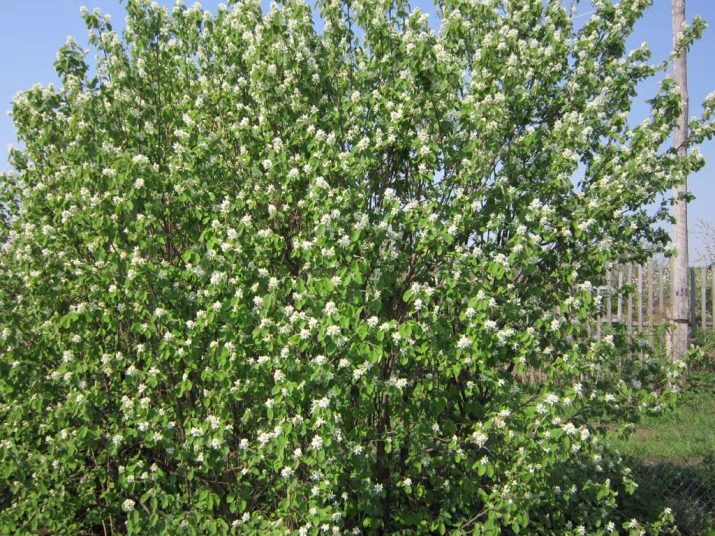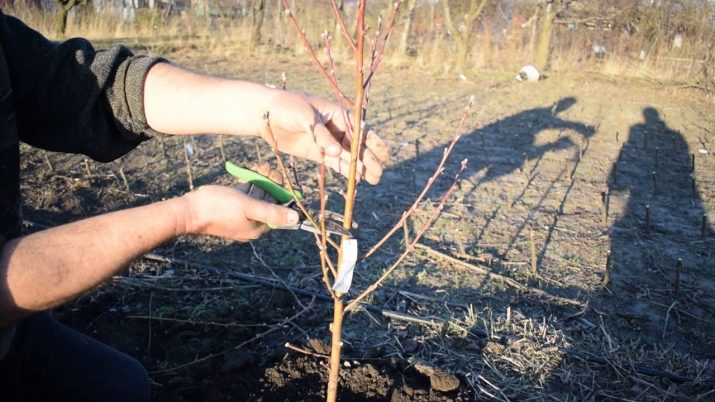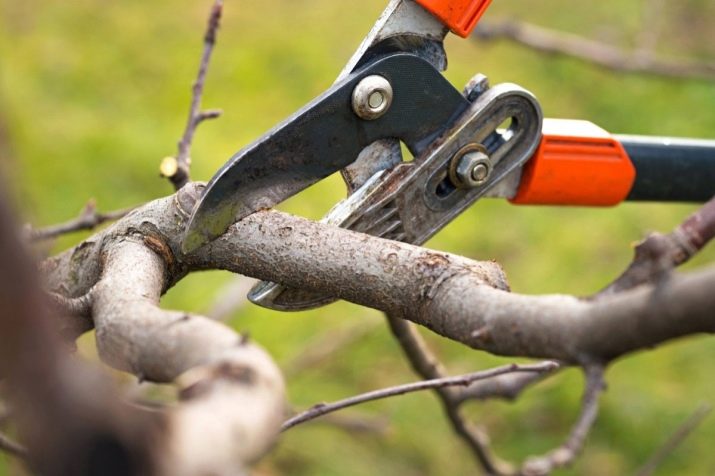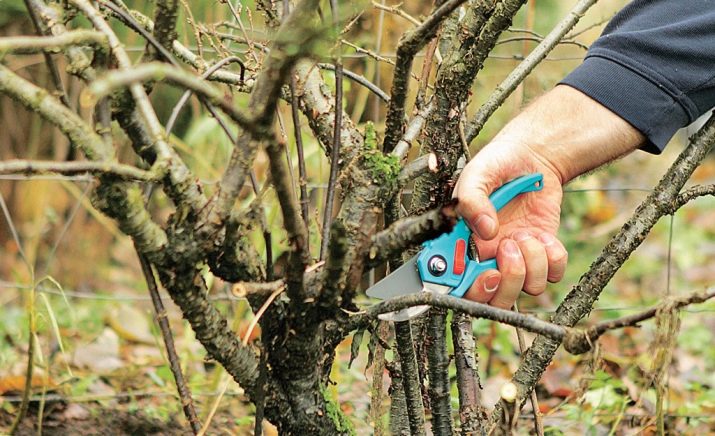Features pruning irgi
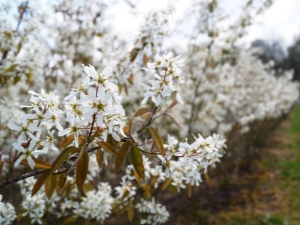
Irga is one of the most frost-resistant berry bushes, which is why it has become widespread throughout our country.The plant is able to withstand temperatures up to -50 degrees, as well as grow normally and bear fruit on depleted soils and problem soils. However, in order for the irga to develop properly and give a rich harvest, it is necessary to take care of it regularly.
Why do you need pruning?
Pruning is considered an important agrotechnical event and has a huge impact on the development and productivity of plants. In addition, the shrub has high decorative properties, so it is imperative to regularly form the crown. Otherwise, the irga runs the risk of becoming a shapeless green mass and will spoil the appearance of the garden with its carelessness.
In shrubs that are not subjected to regular pruning, yield is significantly reduced. This is due to the fact that a significant part of the nutrients and energy of the plant will be forced to spend on the rapid growth of leaves, while in time the cut bushes, these forces will be directed to the formation of a larger number of ovaries and timely fruit loading.
Another important argument in favor of pruning is to increase the level of insolation for still unripe berries. On the overgrown shrubs, the sun's rays are much more difficult to get through to the fruits, and therefore the time of their ripening is significantly shifted, and the berries themselves are quite small.
In addition, too thick and tangled crown is an excellent environment for pests and reduces the ability of the plant to resist various fungal diseases. In addition, a large amount of greens does not allow drugs penetrating in the event of a disease of a plant to penetrate deep into the crown.
Timing
The first pruning of the bush is done in spring, the second year after planting. At the same time, 6 large buds are left on each branch, and the rest are cut off. This will help the shrub to rationally spend their strength and not waste it on the formation of excess green mass. Autumn image is held immediately after harvest. During this period, the crown of the plant is formed and old dried branches are removed.
It is necessary to give the bush a beautiful shape every fall, but you can perform anti-aging pruning every 3-4 years. The frequency of work in this case depends on the growing conditions of the plant, yield and intensity of aging of the branches.
How to trim a plant?
A properly formed irga is a multi-headed shrub consisting of sturdy basal shoots. Weakened and broken branches are subject to removal. In the bush should be from 10 to 15 different-aged trunks, each of which should give at least one young growth. The remaining trunks cut down at ground level, leaving only the strongest young shoots. After pruning large trunks under the root of an irga, it quickly grows with a multitude of new shoots growing from the root, therefore pruning a large number of branches should not cause concern.
Formation of irgi depends on the purpose and desired forms of the bush. If it is decided to grow compact young bushes, the pruning process will resemble a currant bushes formation scheme, during which adult branches are cut, and only young basal growth and 2-year branches are left.
If you plan to grow a large ornamental shrub, then three years after planting the plant leaves all strong zero shoots, and cut off young growth, leaving two or three shoots necessary for the renewal of the plant. In total there are three types of trimming: formative (decorative), sanitary and rejuvenating.
Decorative
Such pruning does not cause difficulties even for beginners. The process of crown formation is quite creative, so in this case you can afford to experiment and measure the crown according to your ideas.In addition to the decorative component, formative pruning allows the plant to get more sunlight and facilitates access to the fruit during harvest. The technology for trimming is quite simple: in order to give the crown a beautiful shape, it is necessary to cut the branches protruding from above and on the sides.
In addition to giving the plants a rounded or cone-shaped shape, decorative trimming of old bushes serves as an additional impetus for building new branches, and also helps to remove dry and diseased processes that have not been cleaned during sanitary pruning. However, the latter is more relevant to adult bushes. On young plants, there are practically no branches damaged or diseased, therefore the process of crown formation is reduced to trimming the crown to the desired height.
Sanitary
This pruning is carried out to remove diseased, frozen, dry and crooked branches, which spoil the appearance of the shrub, and patients also pose a danger to healthy shoots. This type of pruning can be performed at any stage of plant development, including flowering and fruiting. The process of removing the affected branches should begin with a visual inspection of the entire plant, during which all parts that should be removed should be noted. Then you need to alternately cut the marked processes, and in addition to them, remove all branches interlacing and rubbing against each other.
In addition, during sanitary pruning, it is recommended to remove all shoots, as well as the branches growing inside the bush. Perform such pruning should be annually and act in such a way that after each procedure in the bush remained 12-15 trunks, which in subsequent years as they age and loss of productivity will be replaced with new ones.
Pruning of old branches should be done as close to the ground as possible. This is necessary so that short pruning does not spoil the decorativeness of the shrub and it is impossible to scratch them. After removal of the old thick trunks, the place of their pruning is recommended to be treated with charcoal or garden pitch. This will help the wound to heal faster and prevent it from rotting.
Rejuvenating
This pruning is an important step in the care of old plants and can significantly prolong their life. A common mistake of many beginning gardeners is the desire to cut down a stupid, gnarled plant, not even trying to rejuvenate it. As a result, the shrub is destroyed, and it takes time to grow a new fruitful one. And even despite the fact that the irga is a fast-growing species, it will take several years to restore the fruiting garden.
Therefore, if there are old low-productive bushes on the site, it is often enough to properly trim them, after which the plant comes to life and begins to bear fruit no worse than the young one. If the site is acquired relatively recently, and the owner cannot know exactly how old the bush got to him, it is possible to determine the need for rejuvenation by a number of indirect signs. So, if irga with abundant flowering gives little yield or regular shedding of flowers and fruits occurs - this means that the time has come for rejuvenating pruning.
Old branches are removed according to the following scheme: the oldest and thickest branches are selected, shortened by 2/3 of the original length and immediately processed with charcoal. Then the central part of all the remaining branches is trimmed before the first fork, as a result of which a magnificent beautiful crown should turn out.
At the same time it is necessary to track that in one bush from the earth no more than 15 trunks go. If their number is somewhat larger, it is recommended to cut out the thickest and most stiff at its discretion, leaving a strictly recommended amount. The height of the bush after rejuvenation should not exceed 2.5 m.
Do not leave too high a crown. This will make harvesting difficult and cause significant shading of neighboring plants.It is better to stay at the height of the bush 2-2.3 m.
Aftercare
No special care after pruning irga does not require. The plant is able to grow branches very quickly, so in some cases decorative pruning can be done twice a year. After each pruning, you only need to track the breeding of the shoots. Sometimes it happens that the growth of new branches is uneven, because of which the bush begins to lean in one direction or another.
In order to avoid such distortions, it is recommended to tie the cut bushes with the help of willow rods or other material. The harness will help level the shrub and prevent bending of young, fragile seedlings under the weight of the fruit during harvest.
Regular pruning and proper formation of the crown will make irgu the main decoration of the garden and receive a rich harvest of tasty fruits every year.
You will learn about autumn pruning of irgi from the following video.

